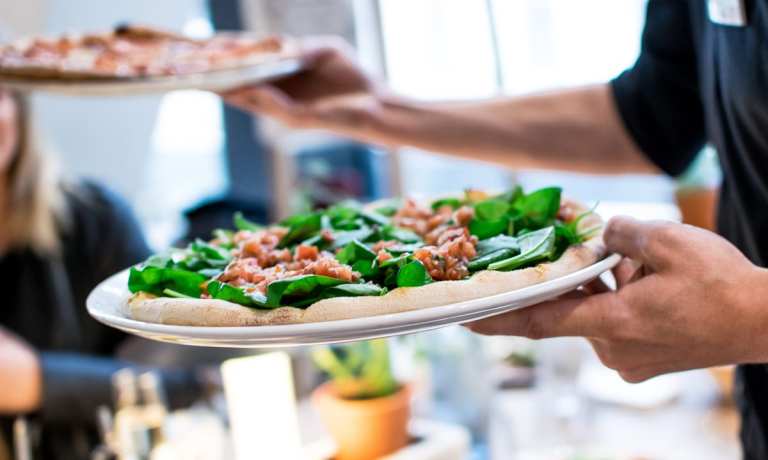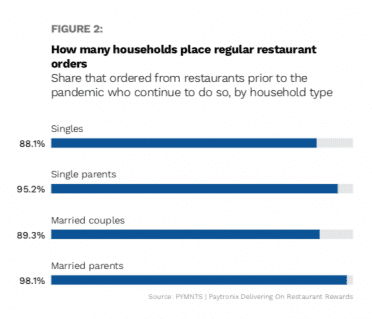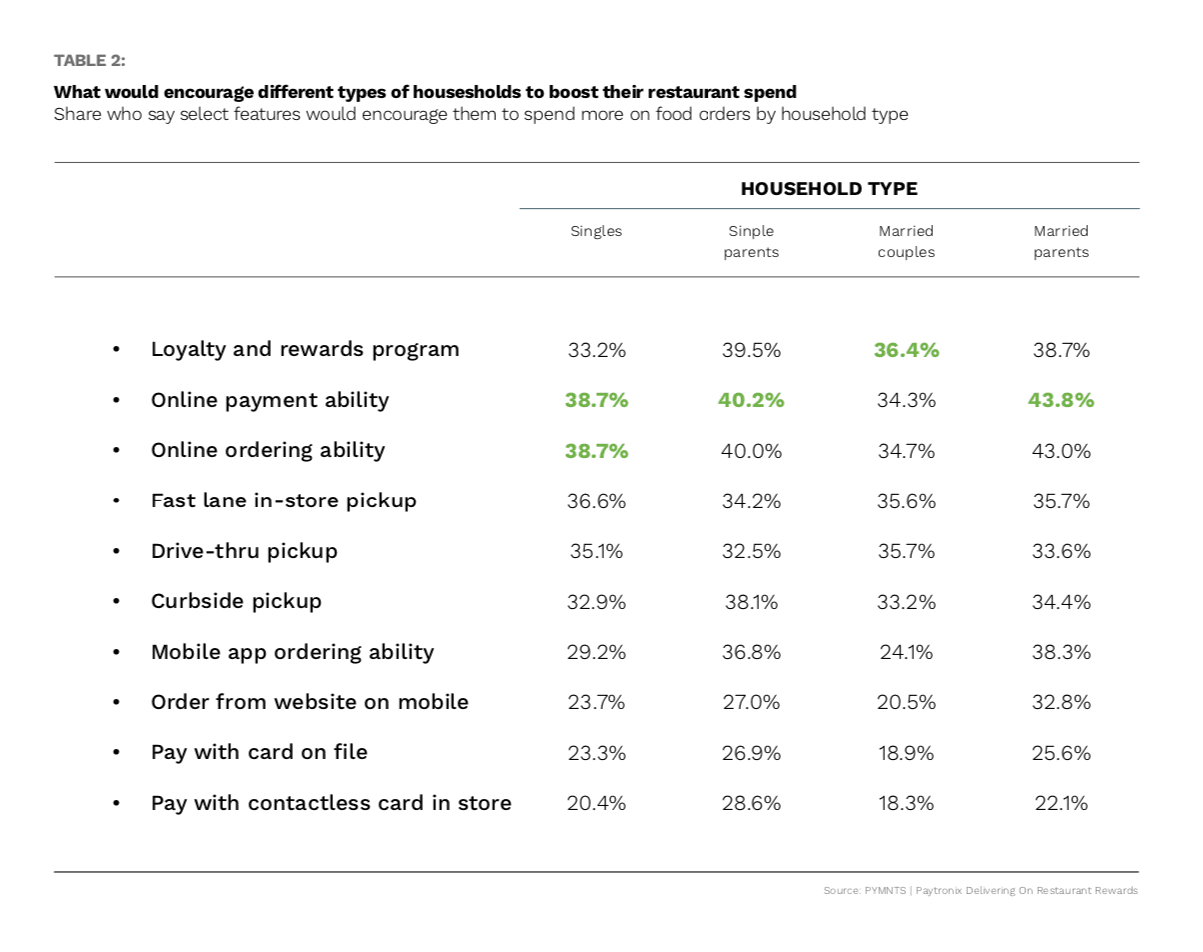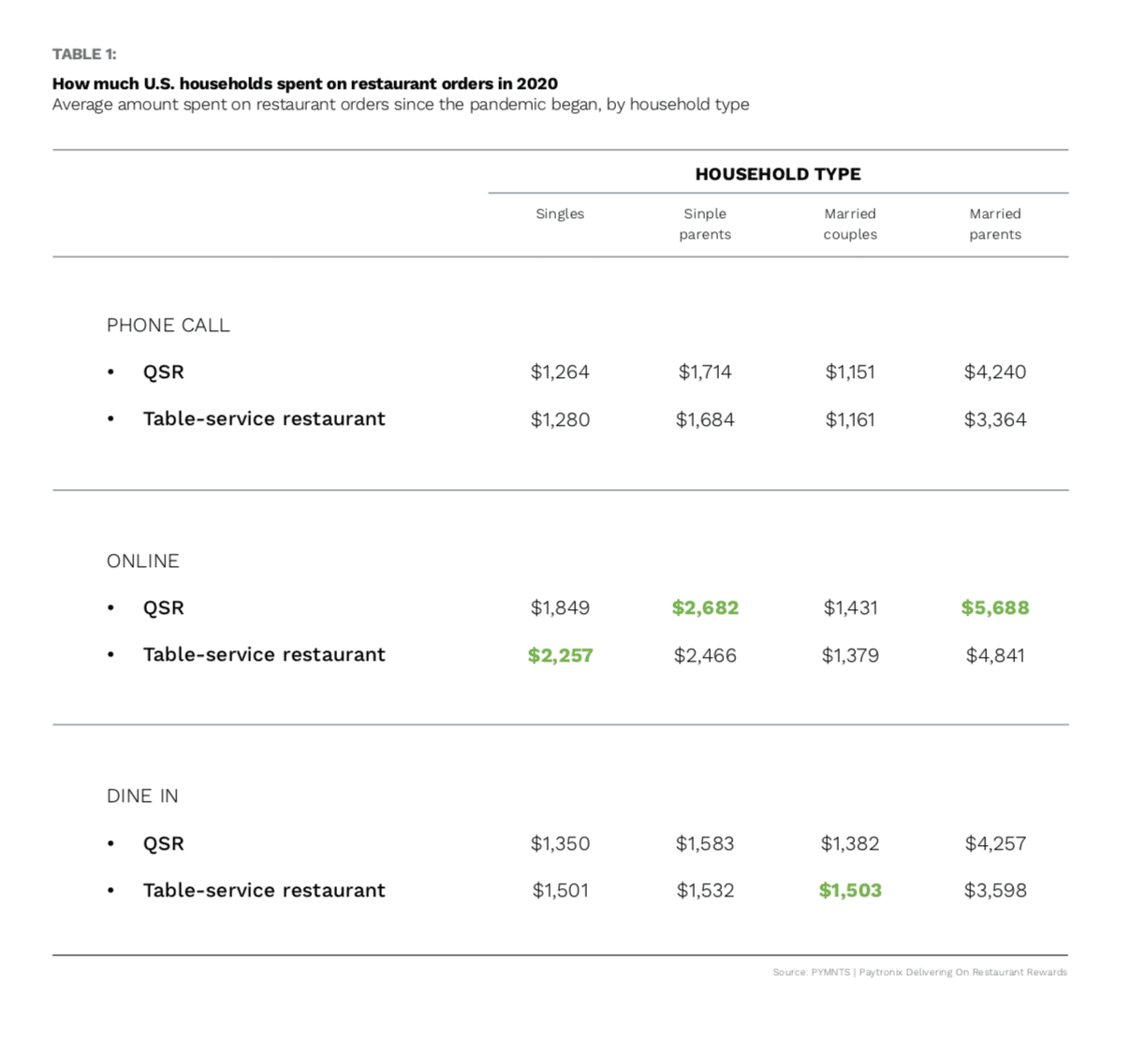
What can we learn from the humble pizza? Known as panis focacius to the Sardinians who, in the mists of antiquity, were likely first to put cheesy toppings atop baked bread, we learn how to eat well. From the thousands of U.S. pizzerias that survived the COVID-19 pandemic we learn that having a delivery infrastructure in place saved pizza from being sacked like ancient Rome.
It’s one of the edible successes coming out of COVID, of which there are more than one might think. PYMNTS March 2021 report Delivering On Restaurant Rewards, a Paytronix collaboration, now in its sixth edition, decodes the mysteries of digital food demand coming out of the pandemic as pizzerias, quick-service restaurants (QSRs) and all eateries stage their comeback.
PYMNTS researchers surveyed a census-balanced panel of nearly 2,200 U.S. consumers to learn how households decide what to spend, where that spending nets the best loyalty bump, and the ordering must-haves that eateries can’t ignore during this delicate reopening phase.
 To kick off the findings, consider this: “Many consumers have stopped ordering from restaurants altogether since the pandemic began, but their likelihood of doing so varies by household,” per the new Delivering On Restaurant Rewards.
To kick off the findings, consider this: “Many consumers have stopped ordering from restaurants altogether since the pandemic began, but their likelihood of doing so varies by household,” per the new Delivering On Restaurant Rewards.
Married parents “are the most likely to have continued ordering from restaurants, with 98 percent saying they have never stopped placing restaurant orders since the pandemic’s onset,” per the new report. “Single parents come in second, at 95 percent, followed by married couples without children and finally singles, at 89 percent and 88 percent, respectively.”
A Few Pointers About Points
As for preferred channel of this edible commerce, PYMNTS found that “The largest share of orders are placed online,” adding that “the average U.S. household spent $4,520 on digital food orders last year since shutdowns began, 42 percent of the $10,832 it spent on all food orders. This compares to average household spending of $3,034 on food orders placed over the phone and $3,278 on food orders placed in person.”
Without the help of researchers, we can surmise that hunger is the prime force behind mobile ordering. The accrual of loyalty points and rewards, however, can also play a huge role. It was a surprise to find that some establishments still aren’t “getting” the new loyalty imperative.
“Loyalty and rewards programs are a common way that restaurant customers look to reduce costs,” per Delivering On Restaurant Rewards, “but many either lack access to such programs or are unaware that they are available. More than half of all table-service restaurant customers say they do not use loyalty programs simply because they do not believe they are available.”
As for the heavy users, it’s single parents by a mile. “Single parents use loyalty programs more than single consumers who do not have children,” per the report. “Only 43 percent of single parents cite a lack of availability as their reason for not using table-service restaurant loyalty programs … compared to 53 percent of single consumers without children who cite this.”

Easy Recipes: Add Digital Loyalty, Sell More Food
Numbers like this don’t lie. Loyalty is emerging as a powerful (though still misunderstood) force in the new dining scene, and it’s the first place restaurants should look for new revenues.
According to Delivering On Restaurant Rewards, “Our research shows that 39 percent of married parents and 40 percent of single parents say that loyalty and rewards programs would encourage them to spend more on their food orders. We also found that 36 percent of married couples and 33 percent of single individuals would spend more on food orders if their restaurants offered loyalty and rewards programs.”
That’s a nutritious and sustaining diet for recovering restaurants, but there’s more to be done.
“Loyalty programs are not the only feature that could help boost restaurant spend. Consumers are also seeking digital features that they can use to order remotely or save time. Married parents are the most likely group to say they would be willing to spend more on food orders if they could pay online, order online or order via mobile app … while single parents are more likely to say they would spend more if they could pick up their orders curbside,” per the report.
